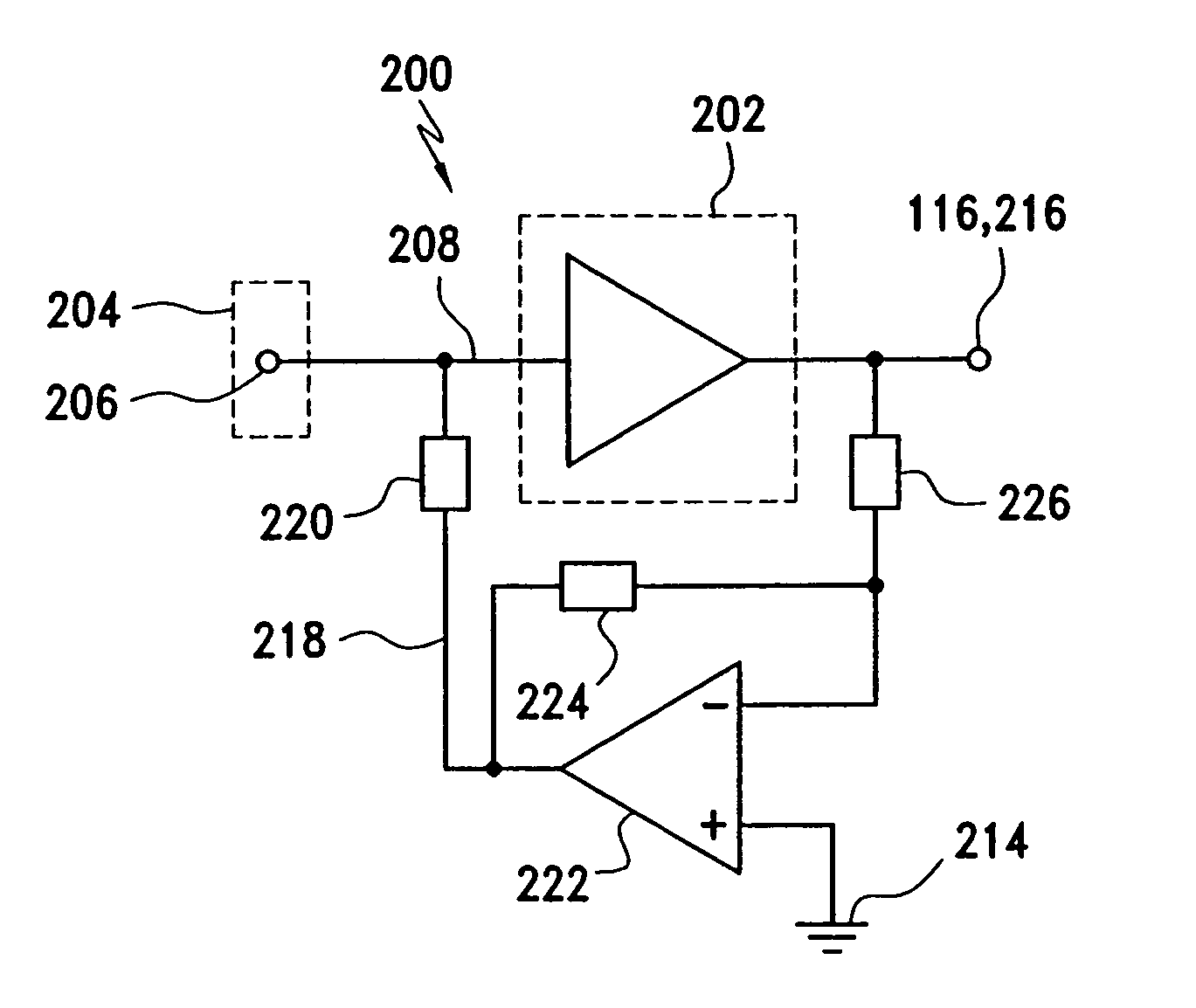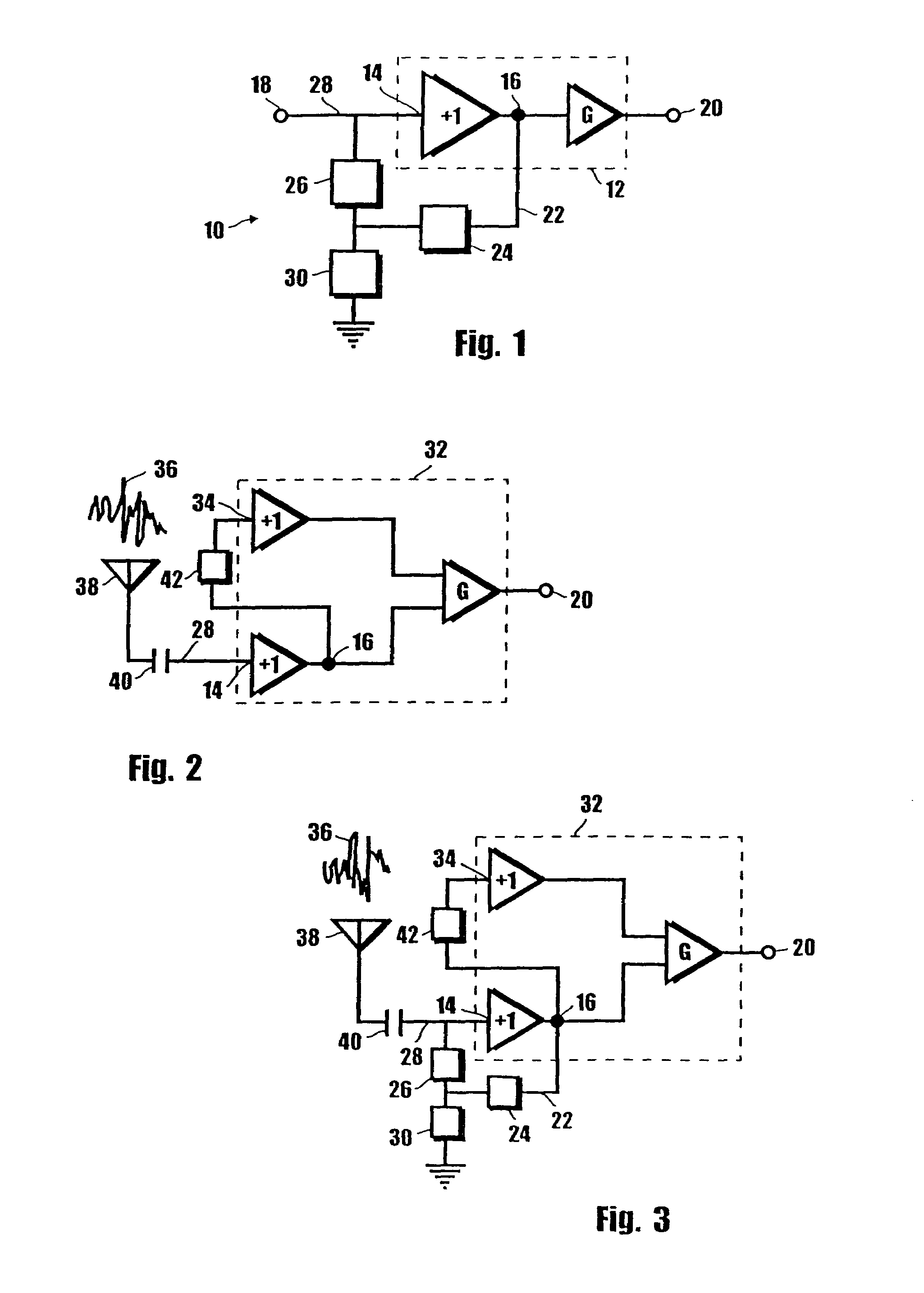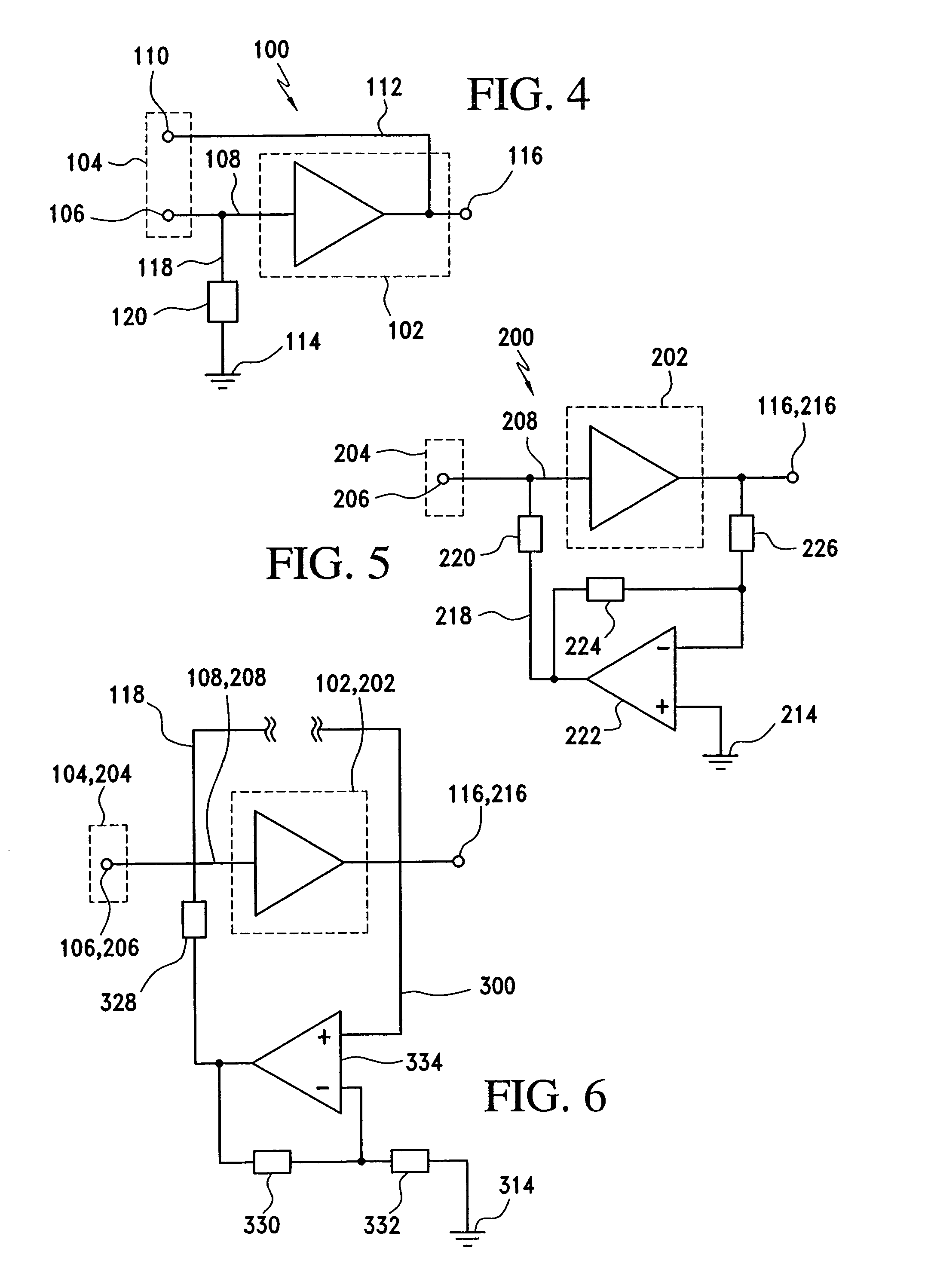Low noise, electric field sensor
a technology of electric field sensor and low noise, which is applied in the field of low noise, electric field sensor, electronic circuit, can solve the problems of not solving all of the problems, affecting the coupling between the antenna and the amplifier, and affecting the performance of the amplifier,
- Summary
- Abstract
- Description
- Claims
- Application Information
AI Technical Summary
Benefits of technology
Problems solved by technology
Method used
Image
Examples
Embodiment Construction
[0021]Referring initially to FIG. 1, a circuit in accordance with the present invention is shown and is generally designated 10. As shown, the circuit 10 includes an amplifier 12 which has an input port 14 and a guard 16. As contemplated for the present invention, the guard 16 is of a type that is known to the skilled artisan. Essentially, the guard 16 provides a voltage that can be used to minimize leakage of the signal to the environment during passage to the input port 14 of the amplifier 12. Importantly, the input port 14 and the guard 16 will have the same input potential.
[0022]In accordance with the normal operation of an amplifier, the amplifier 12 receives an input signal 18; amplifies the input signal 18 by a gain, G; and then provides the amplified input signal 18 as an output 20. The present invention, however, contemplates that the input signal 18 is received from a source having an ultrahigh impedance which can disrupt the normal operation of an amplifier.
[0023]As is we...
PUM
 Login to View More
Login to View More Abstract
Description
Claims
Application Information
 Login to View More
Login to View More - R&D
- Intellectual Property
- Life Sciences
- Materials
- Tech Scout
- Unparalleled Data Quality
- Higher Quality Content
- 60% Fewer Hallucinations
Browse by: Latest US Patents, China's latest patents, Technical Efficacy Thesaurus, Application Domain, Technology Topic, Popular Technical Reports.
© 2025 PatSnap. All rights reserved.Legal|Privacy policy|Modern Slavery Act Transparency Statement|Sitemap|About US| Contact US: help@patsnap.com



